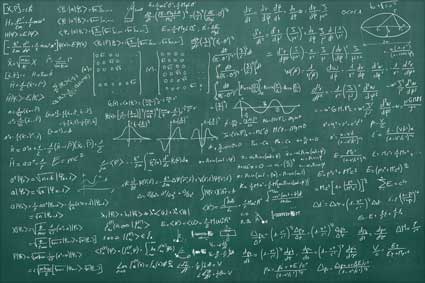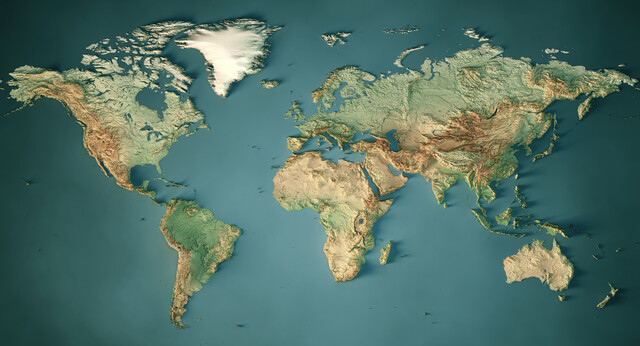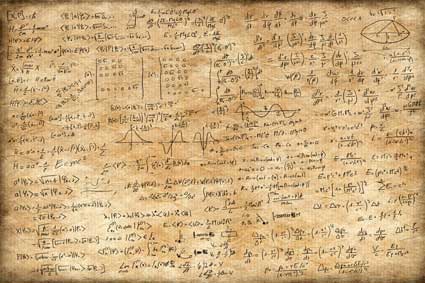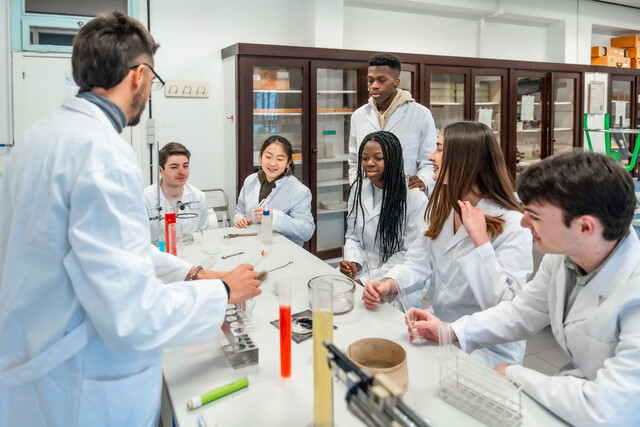?
A. Five States of Matter
While you have probably learned about the three states of matter already (solid, liquid, and gas), did you know that there are actually five states of matter that exist?
1) Bose-Einstein condensate is a very odd condition in which all atoms attain the same quantum-mechanical state. At present, this state is only found within a minute portion of absolute zero. However, researchers believe the condensates may someday be used to make atomic lasers or super-accurate clocks.
2) Solids are materials with a defined volume and shape. Resistant to outside forces, they tend to keep their shape and mass. Examples include: bricks, doors, and humans.
3) Liquids, for the most part, are non-compressible materials that take the shape of their containers and have a free surface. However, they do not have the ability to expand indefinitely. Examples include: water, glue, and ink.
4) Gases expand to fill the size and shape of their containers. They tend to have relatively low density levels. Examples include: oxygen and nitrogen.
5) Plasmas are ionized (electrically charged) gases that possess an equal number of positive and negative charges, examples include fluorescent lighting and the sun.
B. Gases. An Overview
A notable fact about gases is that they often tend to appear in solid form until subjected to increased temperature levels. As heat (energy) is added, the solid melts and, typically, first becomes a liquid, and then, eventually, a gas.
Typically, substances will go through the stages in order: solid, liquid, gas. However, some have the ability to transform without going through each stage. For example, carbon dioxide can go from being a solid to a gas without ever being a liquid. This shortcut process is known as sublimation. Should the gas be further heated, its atoms or molecules can become (wholly or partially) ionized, thus, in turn, turning the gas into a plasma.
In a gaseous state, the atoms in the substance move in an independent fashion. There are no resistive forces either binding them together or pulling them apart. The interactions they do have are rare and random in a collision-like manner. Gas particles move at a high rate of speed, based upon the substance's temperature. This amount of heat is defined by a theory known as a Maxwell-Boltzmann Distribution, which expresses the distribution of energy among the molecules of a gas during thermal equilibrium.
C. Gases. Characteristics
For all intents and purposes, the gas phase is a completely disordered state whereby, in accordance with the Second Law of Thermodynamics, gas particles immediately diffuse to homogeneously fill any shape or volume of space made available to them.
The thermodynamic state of a gas is described by three main characteristics:
- Volume. The quantification of how much space an object occupies.
- Temperature. The measure of the tendency of an object or system to spontaneously give up energy.
- Pressure. The force per unit area applied on a surface in a direction perpendicular to that surface in question.
In thermodynamics, the internal energy of a system is expressed in terms of pairs of conjugate variables, for instance, pressure/volume or temperature/entropy. Quite notably, all thermodynamic potentials are expressed in terms of conjugate pairs.
These three variables are governed by the gas laws, which state that the pressure in an ideal gas, though proportional to its temperature and number of molecules, is inversely proportional to its volume, known as the Ideal Gas Law.
Basically, this law means that the pressure will remain the same as will the temperature, and the volume will increase or decrease in accordance with the degree to which the gas's temperature and pressure rises and falls.
As is true for both liquids and plasmas, gases are also fluid-like substances in the sense that they have the ability to flow and cannot be expected to return to their old configuration after their shape, mass, or size is altered (deformed).
Gases, however, DO have viscosity, the degree to which they resist flow under an applied force. So, contrary to liquids, free-flowing gases do not merely take up a set amount of space (volume), rather they expand to fill up whatever amount of space may be available.
The level of kinetic energy per molecule of gas is the second highest among all of the states of matter (first is plasma). On account of this high kinetic energy, gas atoms or molecules tend to freely bounce off any and all confining surfaces, as well as one another. The greater the kinetic energy, the more powerful their force of movement becomes.
Contributing to this kinetic buildup of force is the fact that gas particles tend to be spread out, while liquid particles, are usually found to be in close contact.
Note: Mutual collisions are important only for establishing the Maxwell-Boltzmann distribution (previously defined).
To recap, the main characteristics of gases are as follows.
1. They are fluid-like substances that have the ability to flow and lack the ability to reconfigure back to their former shape after deformation occurs.
2. They have viscosity.
3. They expand to fill whatever space they are in.
4. Their level of kinetic energy per molecule is the second highest of all the states of matter.
5. Their particles tend to be well separated.
D. Liquids. An Overview and Characteristics
We have already explored the notion that some states share traits with other states, for instance, gases and liquids both have flow and liquids, in this sense, are no exception.
Liquids also share properties with other states, including solids. They both share likeness in terms of color and consistency of density.
However, the similarities end at their respective abilities to flow and take the shape of any container into which they are poured. In short, liquids can flow and take on miscellaneous shapes whereas solids cannot.
Other differences include the viscosity of liquids, a measure of their ability to flow. Liquids with a high viscosity tend to be thicker substances that have a more difficult time passing through a channel (molasses-like oil moving through a pipeline) whereas liquids with low viscosities have an easier time (water flowing out of a faucet).
Related to the concept of "fluid friction," viscosity pertains a great deal to liquids specifically with respect to such concepts as friction and drag.
Another paramount characteristic of liquids is that they will seek a common level, meaning a body of water, like an ocean, will not have shallow spots and deep pockets unless this is true of the curvature of the Earth.
To put it mathematically, the angle of the surface of a liquid will remain at a right angle to the direction of the force being applied to the liquid. This is why water in a spinning bucket has a tendency to climb up the walls of the bucket. Undisturbed, apart from being acted upon by gravitational forces, bodies of water will lie flat. Only when acted upon by outside forces, like wind, cold, or heat, does the water exhibit less controlled behavior.
E. Liquids. Flow and Buoyancy
Another key property of liquids is that they can flow through or over objects. This brings up the concept of buoyancy, defined as the tendency of objects to float or sink when resting atop or submerged within a liquid.
While not a mystery, this reaction is the result of the object's density relative to the liquid. For example, a block of wood is less dense than water and, therefore, floats on top of it. But a rock is significantly denser than water and, thus, sinks when placed in water (is submerged).
Upon being submerged, a rock displaces a volume of water equal to the volume of the rock. In comparison, the block of wood acts in a subtler manner, sinking into the water under the influence of gravity until the point where it displaces a volume of water that is equal to its own weight.
Once all forces have stabilized (point of equilibrium), the wood stops sinking.
This then is known as "Archimedes' Principle," for it was conceived by the ancient Greek mathematician, physicist, astronomer, and philosopher, Archimedes (ca. 287 BC - 212 BC).
Archimedes' Principle further contends that the forces supporting the block of wood will focus upward and inward on it, culminating in a point called the center of buoyancy. Always above the center of mass of a floating object, the location of the center of buoyancy is able to indicate the stability of the object. The greater the distance between the center of buoyancy and the center of mass, the more stable the object, that is, the less likely it is to capsize.
Another marked characteristic of liquids is that if a more dense liquid is poured into a less dense liquid and the two do not mix, they will separate leaving the less dense liquid on top and the more dense liquid on bottom. The classic example of this is the separation that occurs with oil and water.
Submarines are an excellent example of buoyancy at work. While traveling on the surface of the ocean, a submarine possesses an average density somewhat less than that of water. However, when it goes to submerge, the submarine needs to take in water. This then increases its density beyond that of water resulting in its ability to sink.
To once again rise to the surface, the submarine must purge the tanks of water. It accomplishes this task by blowing air into them, which, in turn, forces the water out and lowers the submarine's density.
F. Liquids. Fluid Pressure and Surface Tension
Though not necessarily an obvious fact, regardless of the depth to which it plummets, the actual buoyancy of the submarine does not change in any significant way.
This is because water (as with most liquids and gases) is essentially incompressible and its density is effectively the same at any depth. But even though the density may not change, there is an endpoint imposed by water pressure, the weight of the water above the object (in this case the submarine) that increases linearly with added depth.
Therefore, if you double the depth of the submarine, you will also double the pressure. While this is not such a difficult concept to grasp, what is not quite so obvious is the notion that water pressure is the same regardless of the direction.
For example, if you were to apply pressure to the top of a tank of water, submerging it, but ignored the idea that, as the tank descended deeper and deeper, the pressure acting upon all sides and the bottom of the tank were equal to that pushing on the top of the tank, you would be surprised to find out how heavy the tank becomes. Known as Pascal's Principle, this explains not only the idea that water pressure is exerted in all directions but it also accounts for the notion of buoyancy.
However, if you were to open the valve at the bottom of the tank, water would flood out in a stream, lessening the overall pressure both inside and outside of the tank.
Plus, since the water is now moving, it has kinetic energy. And, as according to Torricelli's Principle, the more the pressure at the valve, the greater the kinetic energy of the flow and the greater its velocity.
To recap, the main characteristics of a liquid are as follows.
1. They are fluid-like substances that have the ability to flow and lack the ability to reconfigure to their former shape after deformation occurs.
2. They have viscosity.
3. They are able to take on the shape of whatever container into which they are poured.
4. They share similar properties with solids in terms of color and density consistency.




























